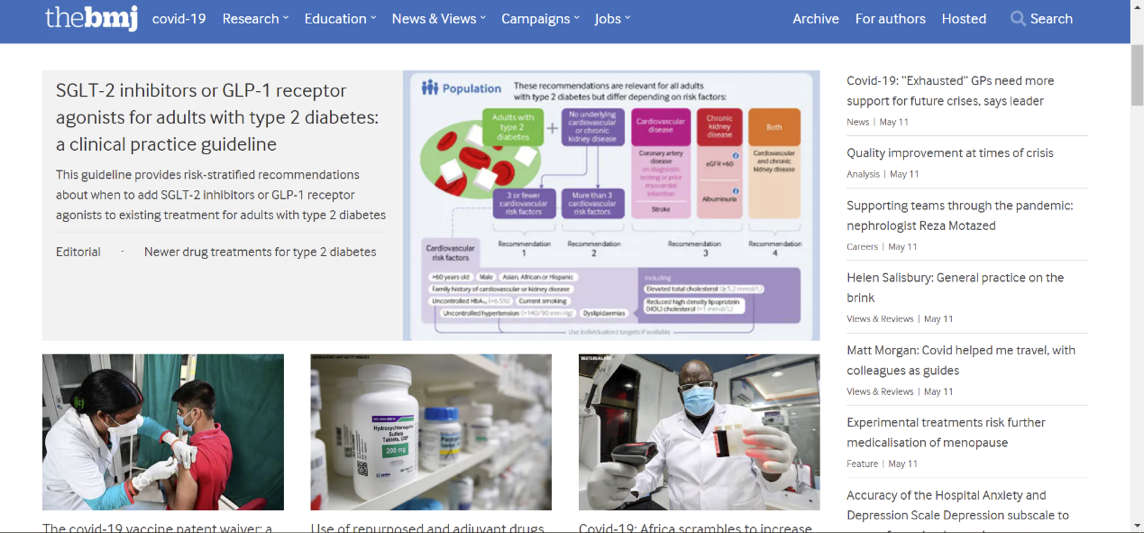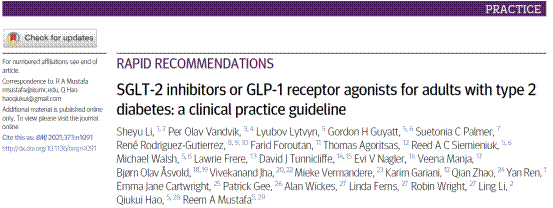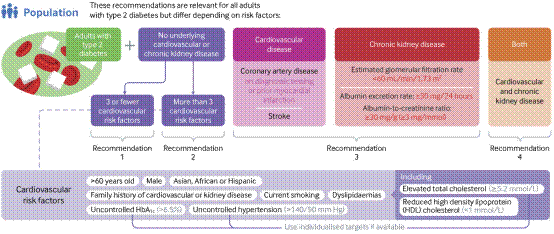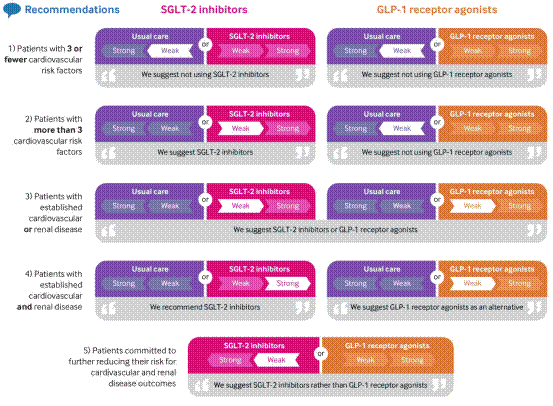On May 11, the BMJ published as its cover story the international clinical practice guideline of SGLT-2 inhibitors and GLP-1 receptor agonists in the treatment of type 2 diabetes. Sheyu Li, associate director ofthe Chinese Evidence-based Medicine Center, Cochrane China Center and MAGIC China Center, West China Hospital(WCH), Sichuan University; Qiukui Hao, associate professor ofthe Center of Gerontology and Geriatrics/National Clinical Research Center for Geriatrics, WCH, Prof. Reem a Mustafa from the University of Kansas, among other clinical and methodological experts from more than ten countries, formulated the guideline. Sheyu Li is the author of the guide, and WCH is the leading work unit of the guideline recommendations.


“People with type 2 diabetes (a condition with an increasing prevalence globally1 2) face an increased risk of cardiovascular disease, kidney disease, and other complications. For decades, management of type II diabetes has been led by blood glucose and glycated haemoglobin (HbA1c) treatment targets, 4 5but recent high quality randomised controlled trials have challenged this glucocentric paradigm, with outcomes suggesting that intensive glycaemic control may not always correlate with a reduction in macrovascular outcomes and may be associated with harm.”
“This guideline represents a shift from the traditional focus on glycaemic control to a focus on the absolute reduction of cardiovascular and kidney disease outcomes. We provide risk-stratified recommendations about when to add SGLT-2 inhibitors or GLP-1 receptor agonists to existing treatment for adults with type 2 diabetes. The recommendations are based on patients’ individual risk of cardiovascular and kidney diseases that determine the anticipated absolute benefits of SGLT-2 inhibitors and GLP-1 receptor agonists. These benefits need to be carefully weighed against potential harms and practical issues resulting from adding these medications to usual care.”


Dr. Sheyu Li and Dr. Reem A. Mustafa served as the clinical chairman on the guideline panel, and Dr. Qiukui Hao served as the methodological chairman. The three subsidiary studies of the guideline, including the evaluation of the efficacy and safety of hypoglycemic drugs, the study of the prognostic model of type 2 diabetes and the values and preferences of patients, were published in BMJ, heart and BMJ Open respectively. Dr. Li and Dr. Hao participated in all three studies. Prof. Steven M Smith of the Department of Pharmacy, the University of Florida wrote a review at the same time, highly affirming the epoch-making significance of the guideline in the field of diabetes drug treatment. The guideline is the first international evidence-based clinical practice guideline for diabetes, which is chaired by a Chinese mainland scholar. It is also the first landmark achievement of theChinese Evidence-based Medicine Center, Cochrane China Center and MAGIC China Center, WCH; and therapid guide research office of WCH.
The British Medical Journal (BMJ) is a world-renowned comprehensive medical journal under the BMJ Publishing Group. It was founded in 1840.
